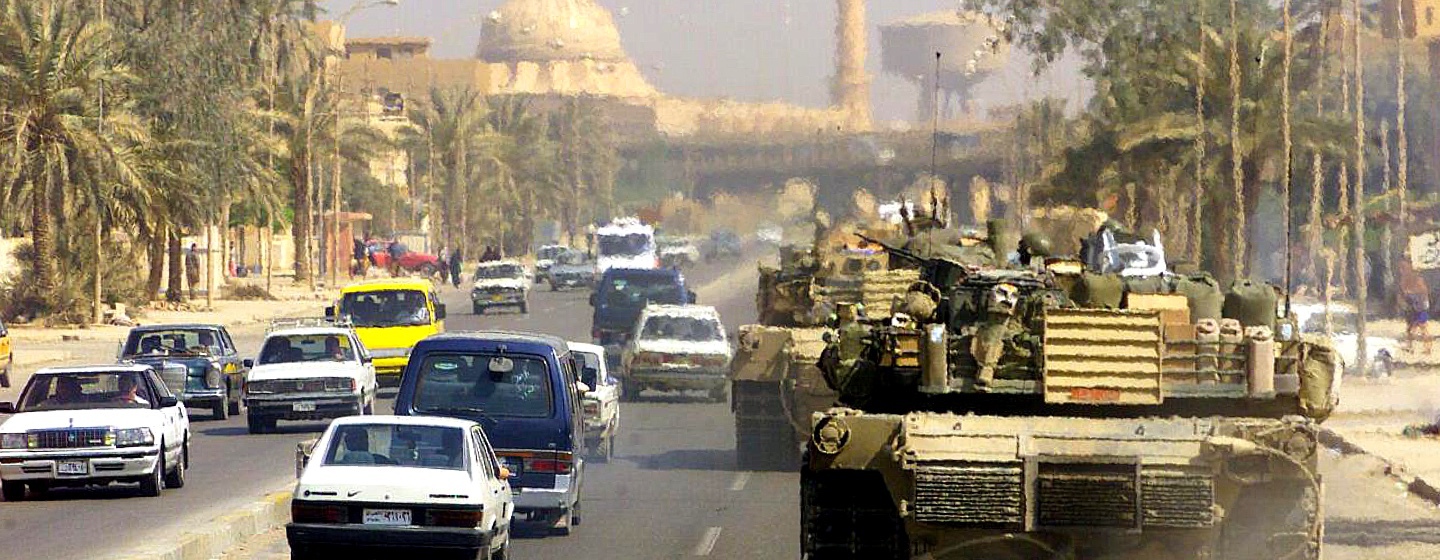
The Battle of Baghdad took place in Baghdad, Iraq, from April 3 – April 12, 2003, and involved intense combat in Iraq’s capital city. This was a significant part of the Invasion of Iraq and had substantial impacts on the Middle East and the rest of the world. If you would like to learn more about the Invasion of Iraq, we recommend reading our blog: Recounting the Invasion of Iraq.
In this article, we’ll describe the strategies that were used, the units that were involved, and the ending results of the Battle of Baghdad.
Combat in Baghdad Begins
On April 3, the US Army’s First Brigade Third Infantry Division successfully overtook the Baghdad International Airport in a matter of hours. The fighting was intense — as the airport was the most defended location during the entire war — and managed to take the lives of several American soldiers. Although, those lives were not taken in vain as this location became a central position for the coalition forces for the next seven years.
Thunder Runs
The Third Infantry Division Second Brigade sent less than 1,000 troops directly through the streets of downtown Baghdad — a city with more than five million people — in tanks and Bradley Fighting Vehicles in what were called “Thunder Runs.” Thunder Runs were inner-city raids that began on April 5; they started their route in the southern portion of the city and ended at the coalition-controlled international airport. Army Col. David Perkins — the Commander of the Brigade — said while talking about an Iraqi general they captured: “He was completely surprised there were American tanks in the city. He believed their propaganda that the Americans were a hundred miles south, dying by the thousands. All of a sudden, he’s coming to work, and there is a tank battalion rolling down the center of Baghdad.”
Moe, Larry, and Curly
Objectives Moe, Larry, and Curly took place on April 7 to keep the roads clear during the second Thunder Run. Each objective was named after a character in The Three Stooges and was established in a major, Iraqi intersection.
- Moe – Highway 8 and Qadisiyah expressway
- Larry – Qatar Al-Nada street
- Curly – Dora expressway
Capt. Dan Hubbard thought the combat was extremely chaotic and said: “It was like fighting a bunch of different groups that didn’t know what each other were doing.” Nonetheless, the Moe, Larry, and Curly objectives saw heavy combat and the deaths of four United States Soldiers – but were successful in their mission of keeping Highway 8 clear for the second Thunder Run.
Final Remarks
Minor combat continued but, by April 12, Saddam Hussein left Baghdad and the coalition forces officially occupied the city. The Battle of Baghdad caused many deaths — 34 deaths to coalition Soldiers and more than 2,000 deaths to Iraqi soldiers. At US Patriot Tactical, we’re forever thankful for all the coalition troops that risked their lives and are very proud of the outstanding military leadership that was shown during the Battle of Baghdad.





